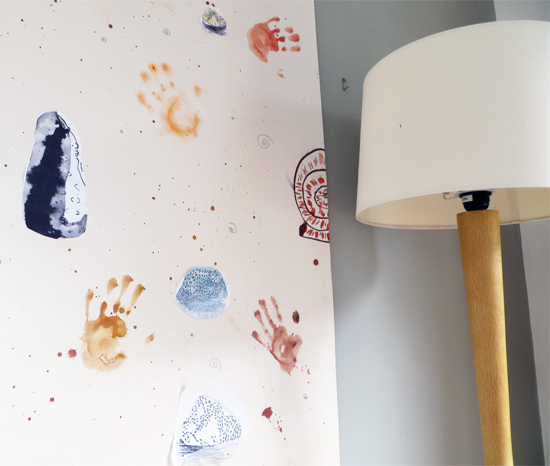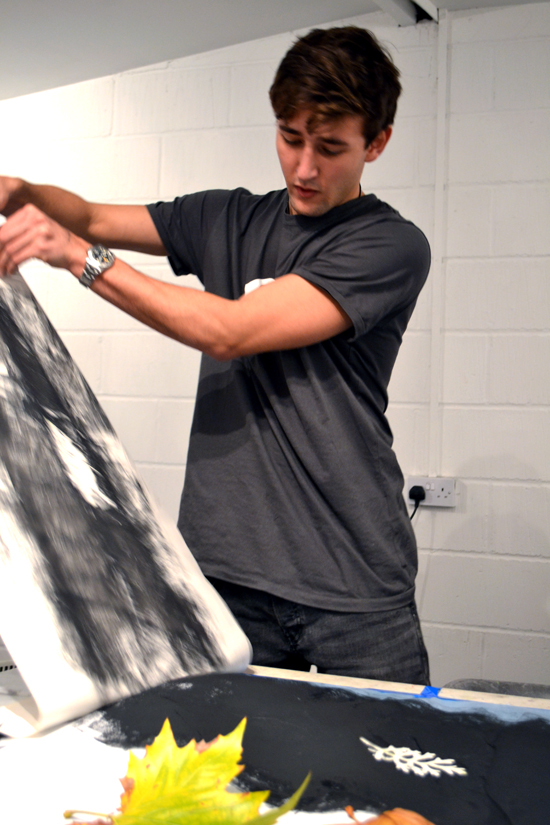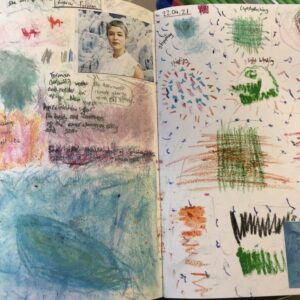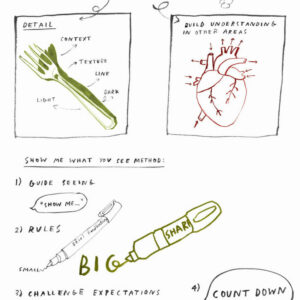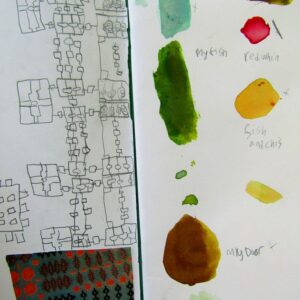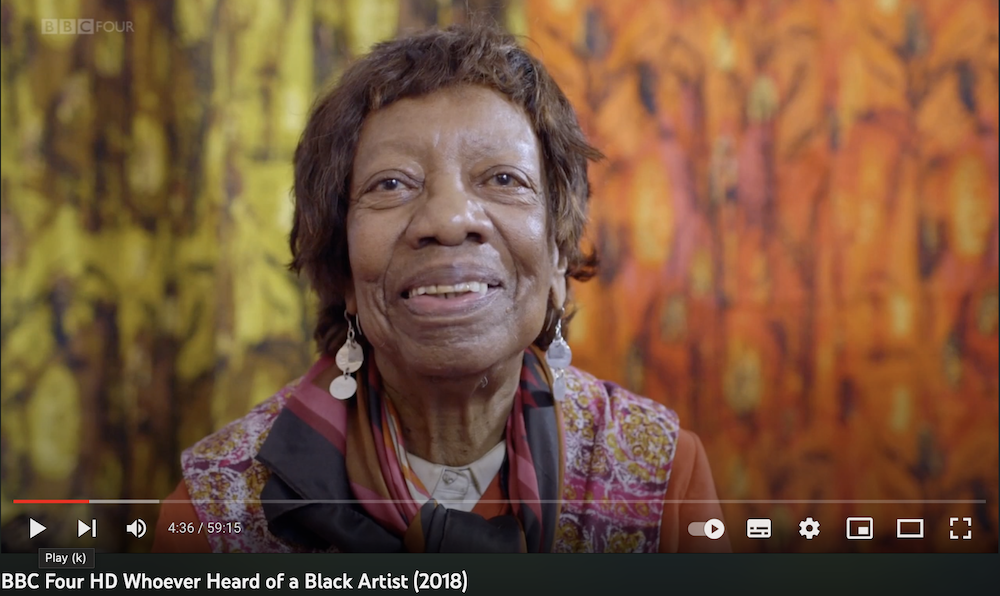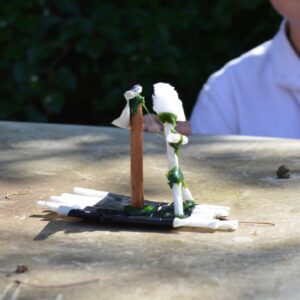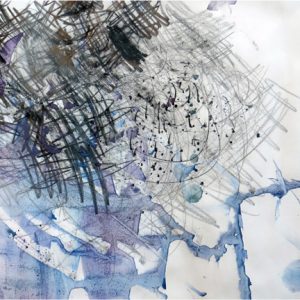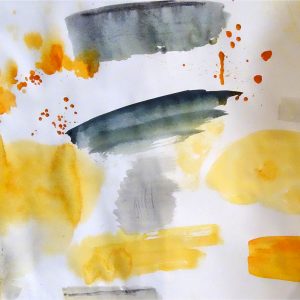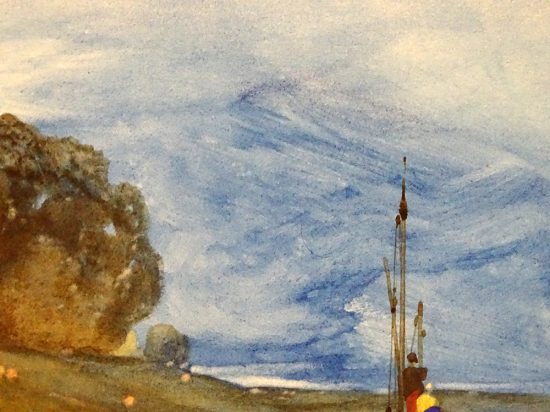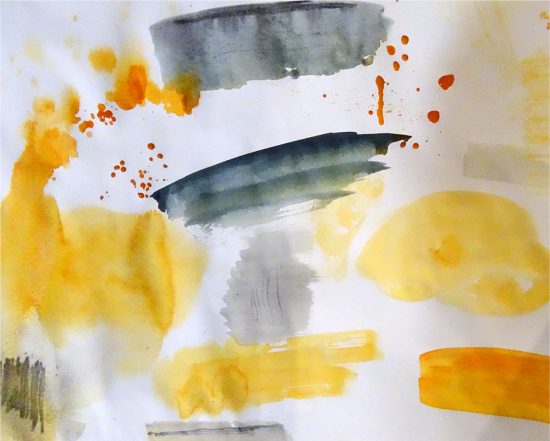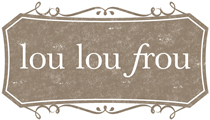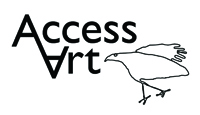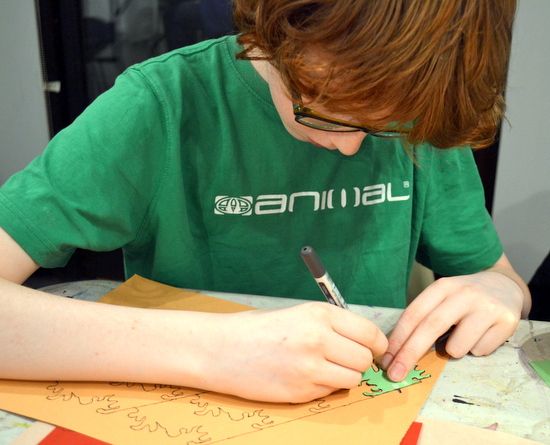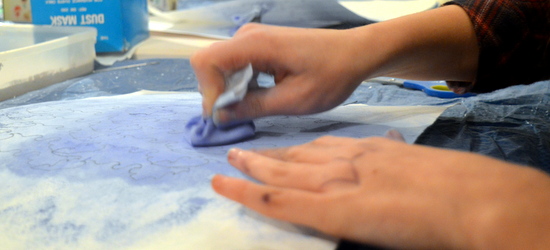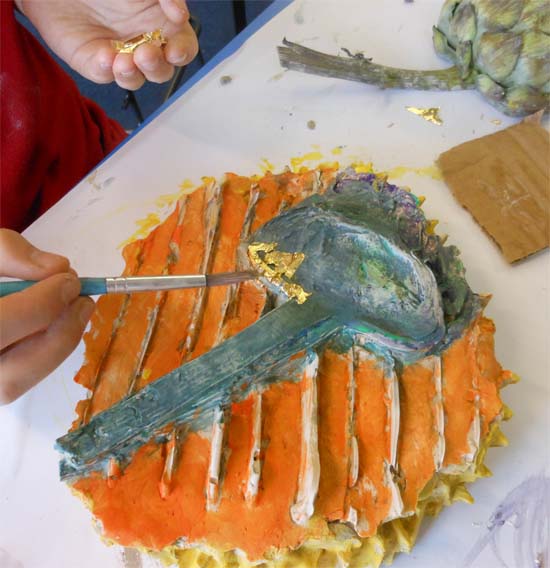This post shares how Paula Briggs and Sheila Ceccarelli from AccessArt and Kate Noble from the Fitzwilliam Museum, Cambridge, enabled teachers to explore 20th Century paintings and sculpture, through using sketchbooks & drawing as tools for looking and remembering.
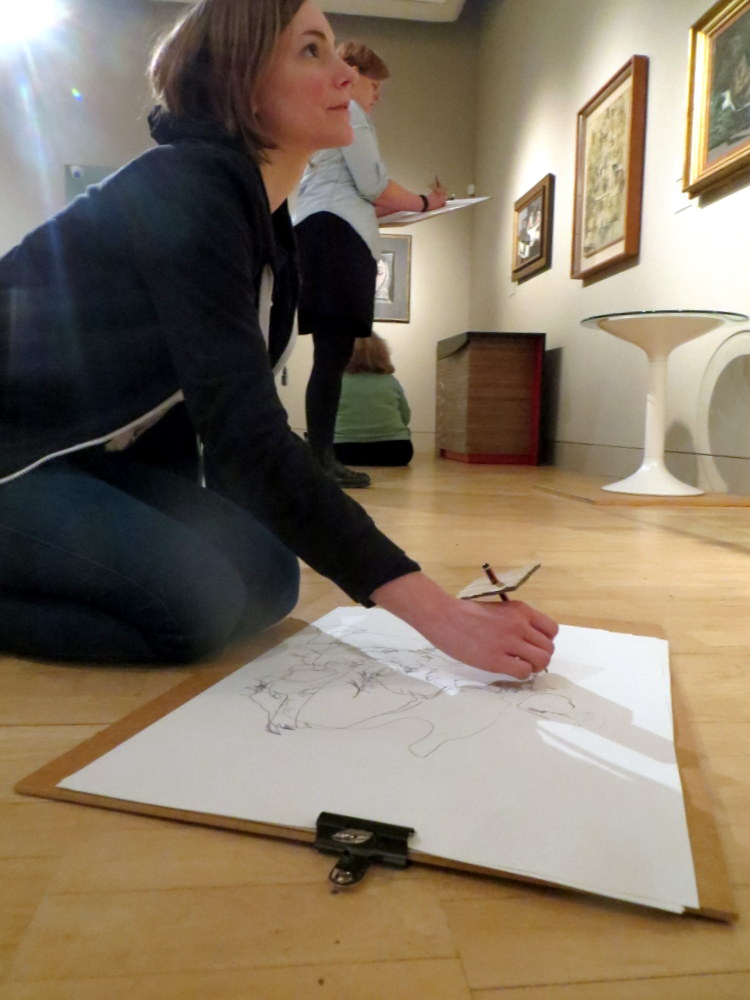
Overcoming the White Paper
Drawing can be a powerful route into exploring artworks.
This session was about using drawing as a tool to ‘look’ and gather information – not about creating finished pieces but building drawings, rich with visual clues and reminders for later.
It can be helpful to be able to have drawing techniques or warm up exercises to take away the feeling of being daunted by great works and overcoming one’s own ‘white page syndrome’.
First teachers are encouraged to hold the pencil gently in the tips of their fingers and let it dangle over the paper to explore, gentle, light movements.

Then, working their way down the pencil until held half way and grabbed or clutched and allowing the pressure of marks to push down onto the paper. The pencil is still vertical and marks are strong.

Continuing the exploration of the pencil, teachers then hold their tool horizontally, allowing the tip to make rich, small and thick scraping movements.

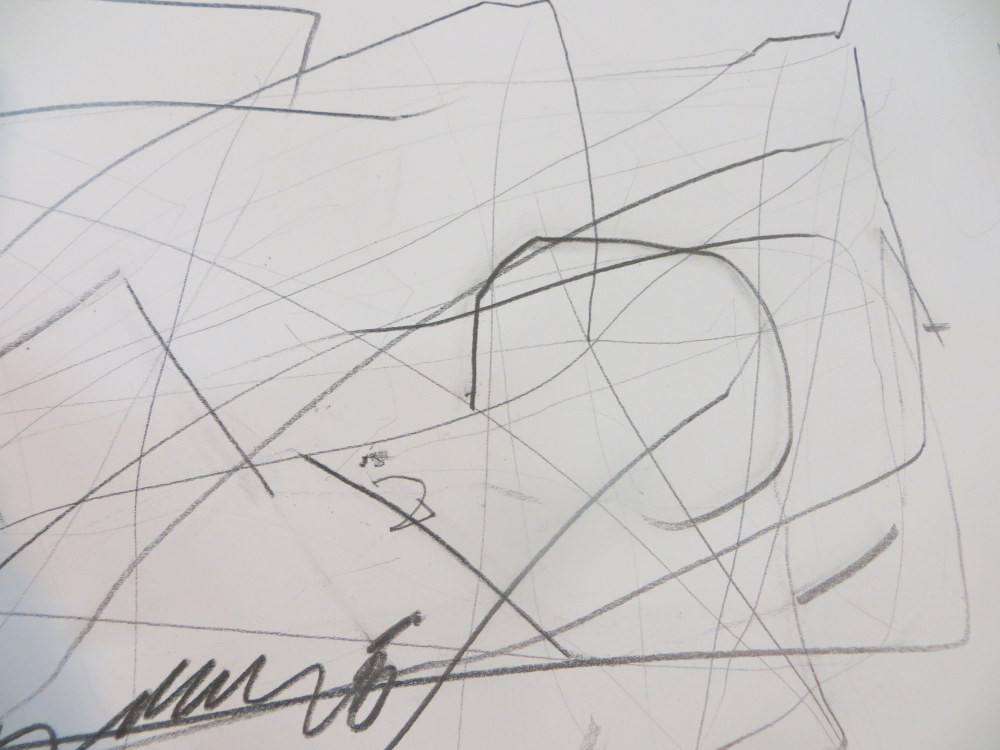
Tools for looking at, and reflecting on, 20th Century Art by Kate Noble
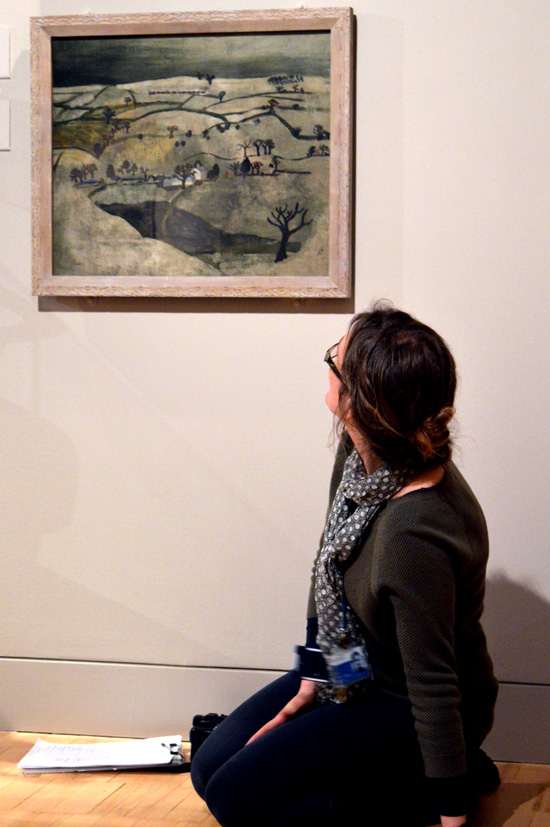
Sometimes it is good to just take the time to look really closely at just one painting or object.
We started the session by spending a few minutes sitting in silence looking at the painting. We guided our looking by starting at the top of the painting and then letting our eyes travel slowly down the picture in a zig zag from left to right.
If there was an area which was interesting we were invited to stop and look at that detail for a bit longer. Once we had all had time to look we talked about what we had seen and then chose a part of the painting to explore in more detail.
This time we ventured ‘inside the frame’ to imagine ourselves in the painting. What could we smell, hear, see, touch during our adventure? We then shared our personal responses to the painting and discussed how this helped our own looking and increased our awareness of individual differences in interpretation.
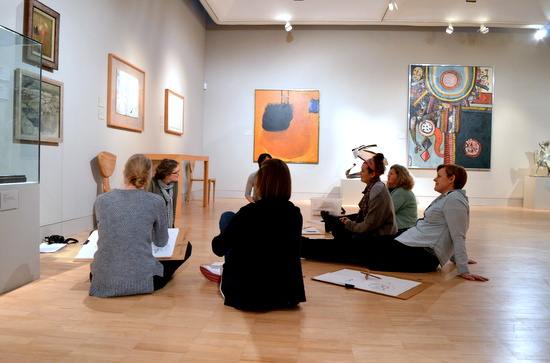
Click on this link to take a closer look at William Nicholson’s Frostbound
Drawing to collect ideas
Teachers were then encouraged to move around the gallery looking for works from which they wanted to respond. This was an exercise to help ‘collect’ visual information and make visual ‘notes’ using drawing.
They worked with a ‘continuous line’, filling the paper with contour drawings of their observations.
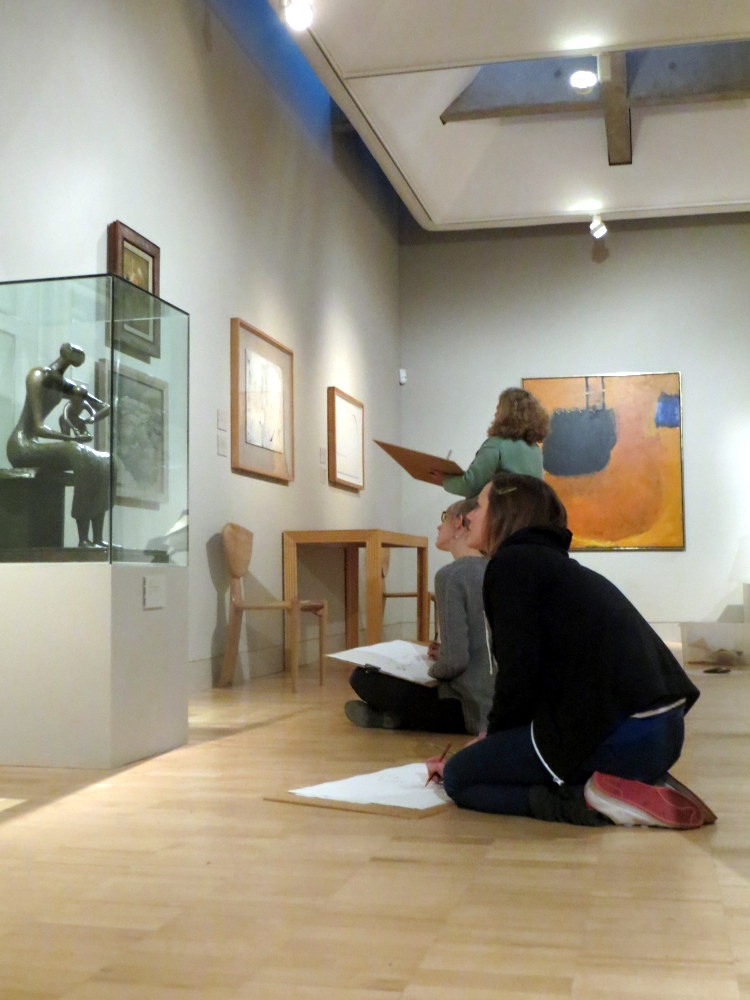
To prevent teachers worrying about their own drawings and to aid keeping to the task of looking at the artworks in front of them, they were given a piece of cardboard to block their view of their own drawing.
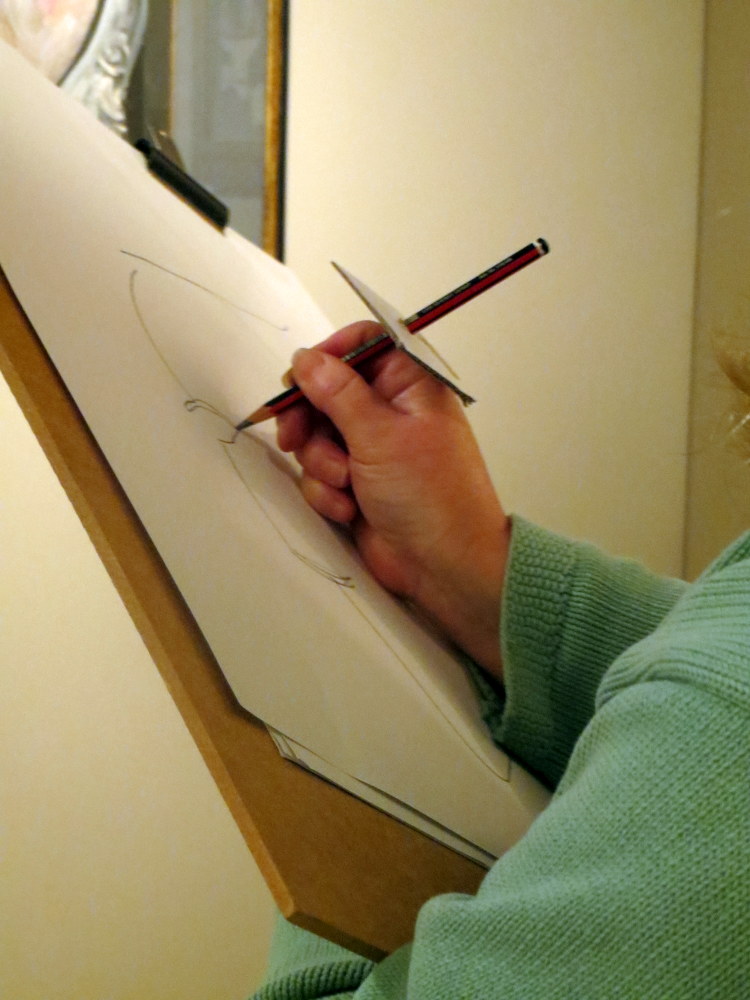
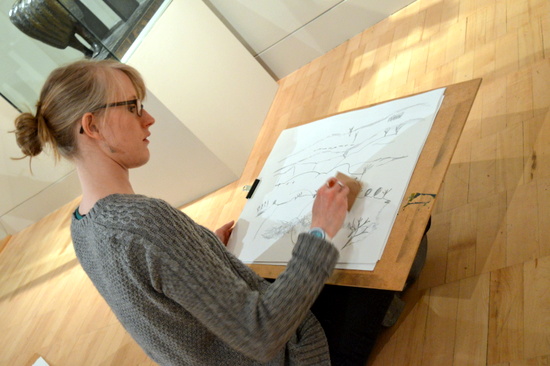

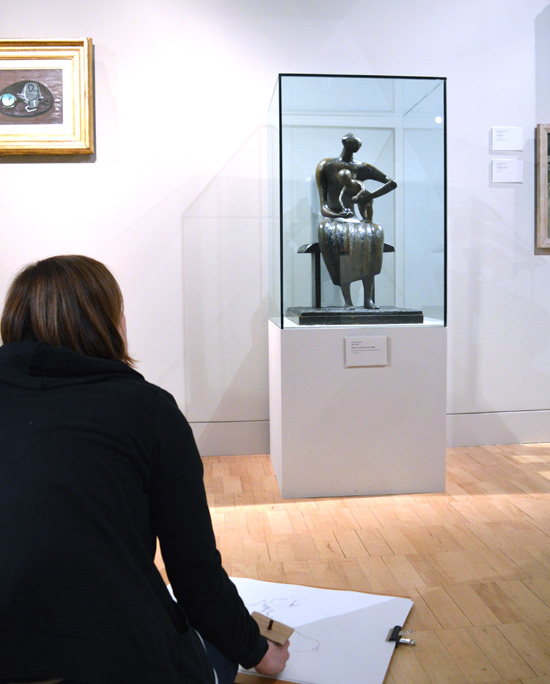
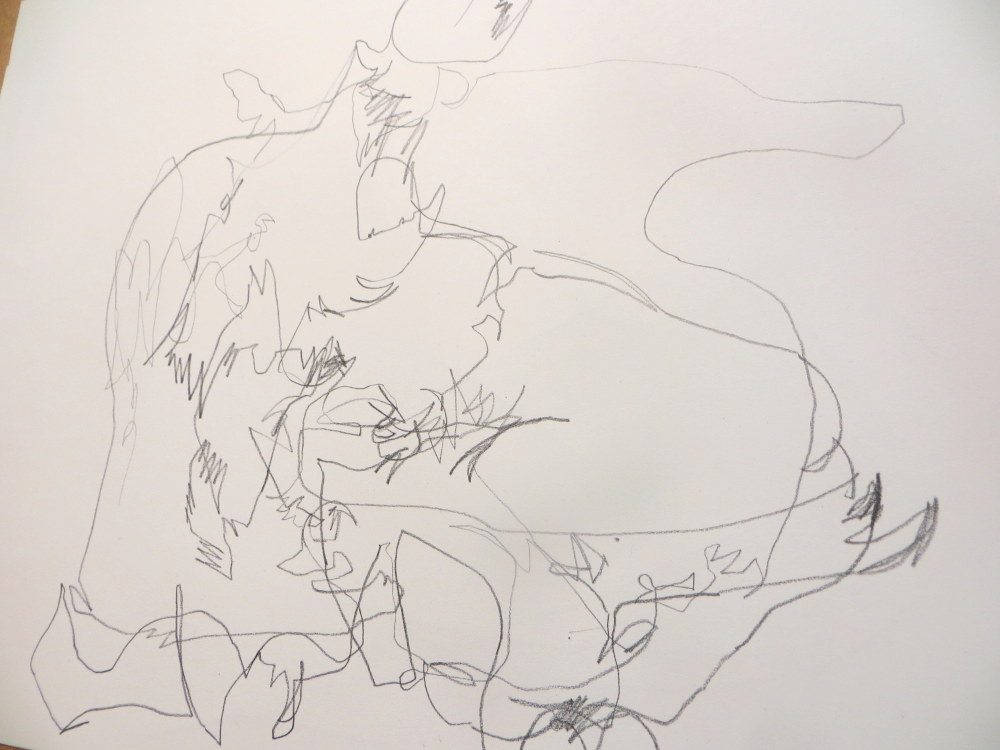
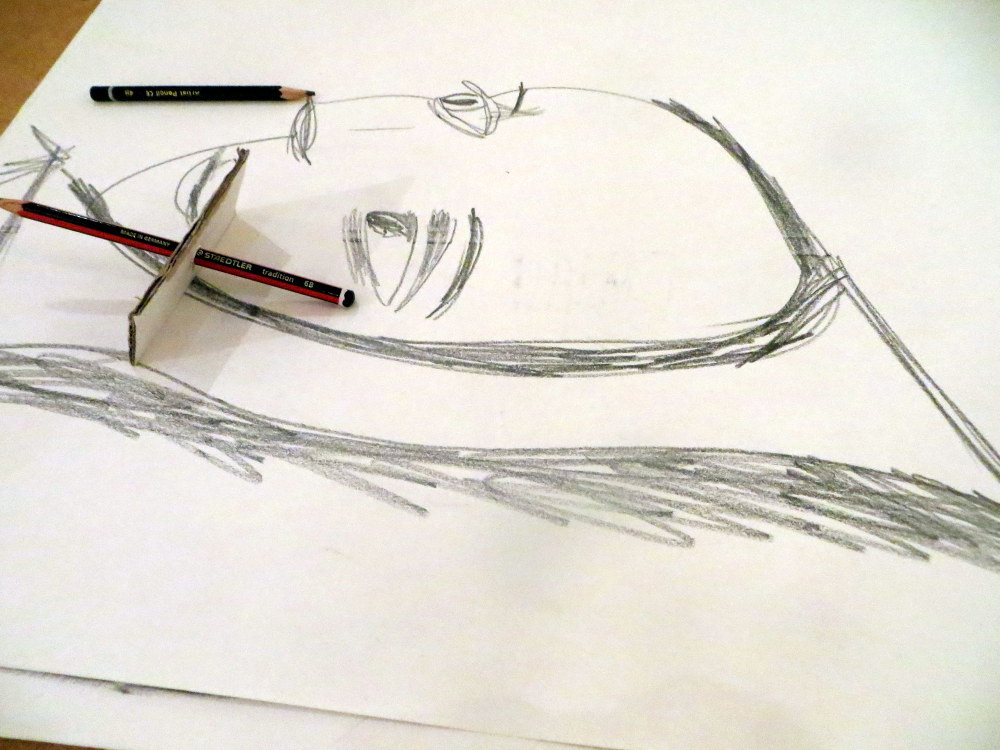
Taking notes to trigger memories later
As part of ‘collecting’ teachers were also encouraged to make notes on their drawings to help trigger memories later.
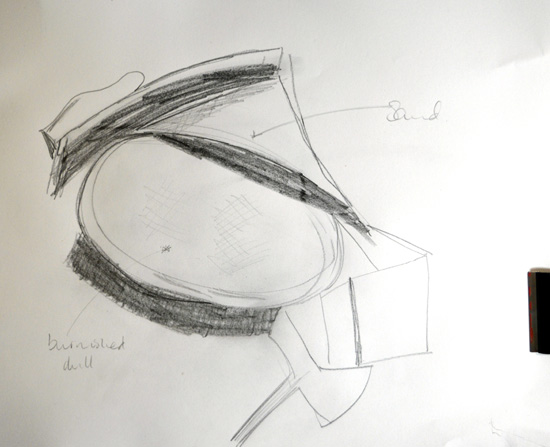

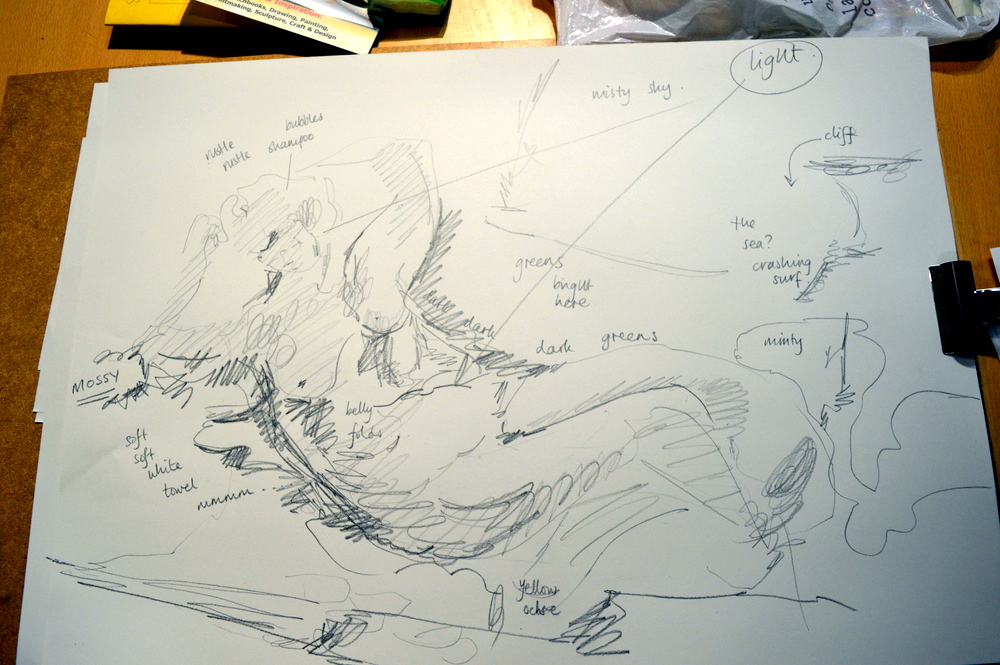
Many thanks to the teachers who participated in this InSET training session for sharing their process with AccessArt and the Fitzwilliam Museum, Cambridge.
Thank you to Kate Noble for facilitating this session.
Photos by Paula Briggs, Kate Noble and Sheila Ceccarelli.

UK Charity AccessArt created this resource in collaboration with the Fitzwilliam Museum, Cambridge.
AccessArt has over 850 resources to help develop and inspire your creative thinking, practice and teaching.
AccessArt welcomes artists, educators, teachers and parents both in the UK and overseas.
We believe everyone has the right to be creative and by working together and sharing ideas we can enable everyone to reach their creative potential.
Related Posts
Teachers Explore ‘Line and Shape’ at the Fitzwilliam Museum, Cambridge with AccessArt
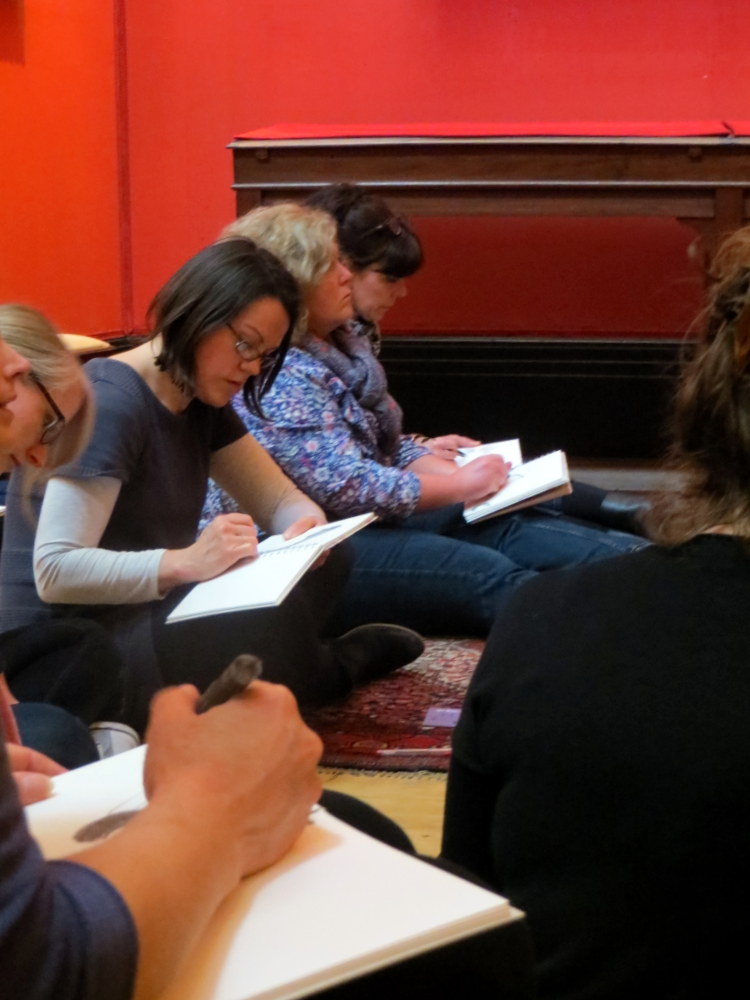 See all the blog posts from AccessArt’s InSET in collaboration with the Fitzwilliam Museum. Find top Museum Education practice with practical, hands on learning in Fine Art disciplines including: drawing, printmaking, sketchbooks, collage and sculpture.
See all the blog posts from AccessArt’s InSET in collaboration with the Fitzwilliam Museum. Find top Museum Education practice with practical, hands on learning in Fine Art disciplines including: drawing, printmaking, sketchbooks, collage and sculpture.
Continuous Line Drawings (Squiggle Drawings) of Sticks
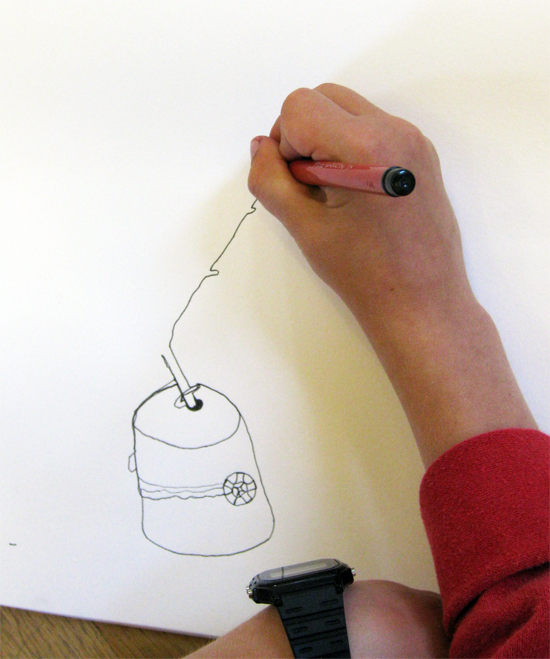 Look at this post to see how pupils aged 6 to 10 respond to a continuous line exercise exercise led by Paula Briggs.
Look at this post to see how pupils aged 6 to 10 respond to a continuous line exercise exercise led by Paula Briggs.
Teenagers Make Prompts to Overcome White Page Syndrome
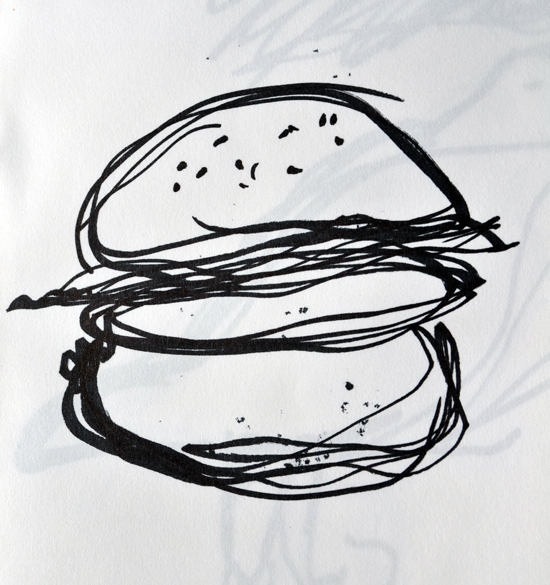 See here how teenagers overcome the white page with Sheila Ceccarelli.
See here how teenagers overcome the white page with Sheila Ceccarelli.
